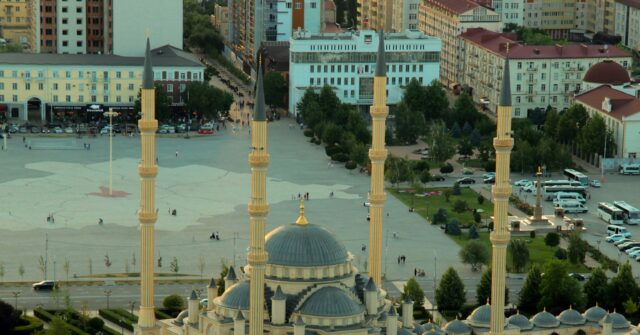Over the weekend, the conflict between Ukraine and Russia escalated as a Ukrainian drone strike targeted a facility belonging to Russia’s National Guard in Chechnya. This attack followed a large-scale air assault on Ukraine by Moscow, which involved an extensive barrage of missiles and drones aimed at undermining Ukraine’s energy infrastructure. Videos circulating on social media depict the drone’s approach over Grozny, Chechnya’s capital, culminating in an explosion at the site associated with the Akhmat Grozny riot police battalion. While Chechen leader Ramzan Kadyrov confirmed the strike and stated that two additional drones were intercepted by air defenses, he vehemently expressed intentions of retaliating against Ukrainian forces, pledging missile strikes against military installations in Kharkiv. However, his claims of retaliation remain unverified, raising questions about the actual operational capacity and responses of the Russian military in the region.
In a further escalation of countermeasures, the Russian Defense Ministry reported the interception of 15 Ukrainian drones over various territories, including Kursk and Belgorod, as well as in the Black Sea. Notably absent from their account was any mention of the attack in Grozny, suggesting a potential effort to downplay the incident. In a parallel operation, Ukrainian security forces reportedly conducted a strategic offensive aimed at disrupting Russian supply lines, particularly those transporting fuel from Crimea to the occupied areas of Zaporizhzhia. This operation, which involved the sabotage of a locomotive and 40 tanker cars along with damaged railway infrastructure, underscores Ukraine’s continued commitment to targeting logistical hubs that support Russian military operations.
Kyiv’s responses to Russian hostilities extended beyond localized attacks and included significant strikes that aimed at facilities seen as crucial to Russian military efforts. Major infrastructure, such as an oil terminal, was set ablaze amid counteroffensive strategies against Moscow’s ongoing bombardments. The weekend’s exchange of fire unfolded shortly after Russia launched a massive missile campaign against Ukraine, deploying 93 cruise and ballistic missiles alongside nearly 200 drones in a concerted attack that further exacerbated the humanitarian and infrastructural crises within Ukraine. As the conflict persists, the situation on the ground remains tenuous, with Russian forces apparently making gradual advances in the eastern region of Ukraine, particularly noted in their operations around the besieged settlement of Kurakhove.
The implications of these military actions lead to considerable uncertainties regarding the future trajectory of the war, especially with the impending inauguration of U.S. President-elect Donald Trump. His recent comments, which express skepticism about the continuation of U.S. support for Ukraine, indicate potential shifts in foreign policy that could have profound effects on the ongoing conflict. The relationship between Ukraine and its Western allies hinges significantly on military support, with Kyiv relying heavily on foreign aid to bolster its defense capabilities against Russian aggression. Trump’s stance on limiting Ukraine’s operational reach, particularly regarding attacks within Russian borders, raises concerns about the strategic options available to Ukraine as it seeks to navigate the multi-faceted dynamics of the conflict.
On the Ukrainian front, the air force announced a substantial overnight incursion by Russian forces, with 108 drones launched into various regions. Ukrainian air defenses effectively intercepted 56 of these drones, while others either failed in their mission or returned to Russian territory. The impact of these attacks was felt in cities like Mykolaiv, where casualties occurred along with damage to local infrastructure. The continued onslaught underscores the heavy toll the conflict has on urban centers and highlights the urgency for both humanitarian and military responses. Local officials are alarmed at the persistent threats their communities face, and civilian casualties further intensify calls for international support and humanitarian aid in the region.
As the conflict evolves with each tactical maneuver and airstrike, both Ukraine and Russia remain entrenched in a battle for territorial control, national sovereignty, and international standing. The exchange of drone strikes and missile attacks marks a pivotal moment in the war, reflecting a shift towards increasingly aggressive tactics from both sides. The dynamics of military engagement include psychological impacts on both military personnel and civilians, reshaping collective perceptions of security, resilience, and the potential for resolution. The broader implications for regional stability and geopolitical relations remain, as the international community closely watches the developments, assessing the potential for escalated involvement or diplomatic endeavors to bring about a ceasefire. As the situation fluctuates, the ramifications will likely extend beyond the immediate context of the conflict, affecting diplomatic relations and security strategies throughout Europe and beyond.

